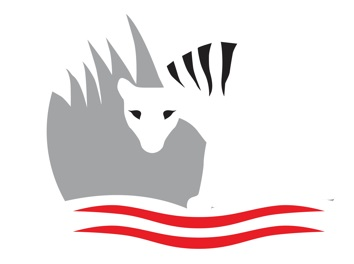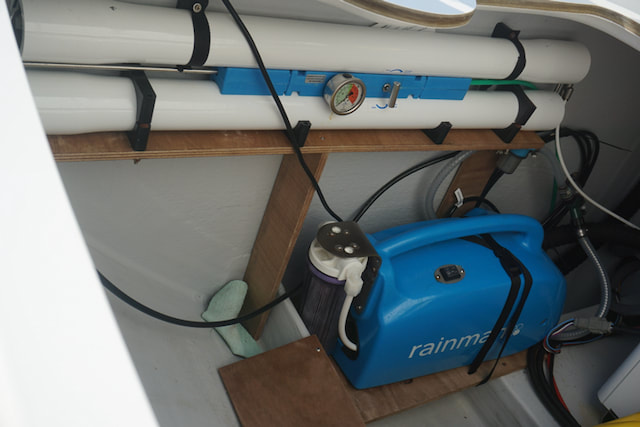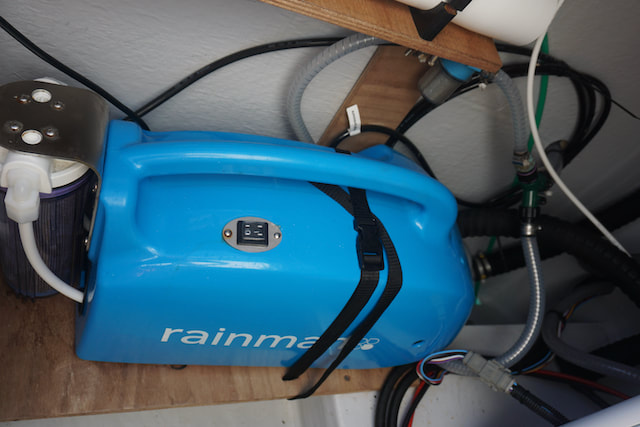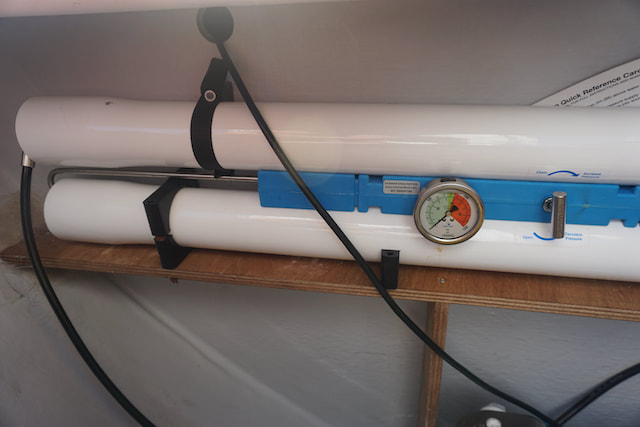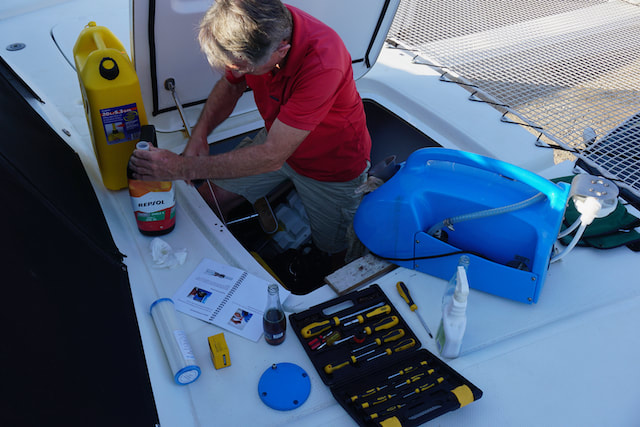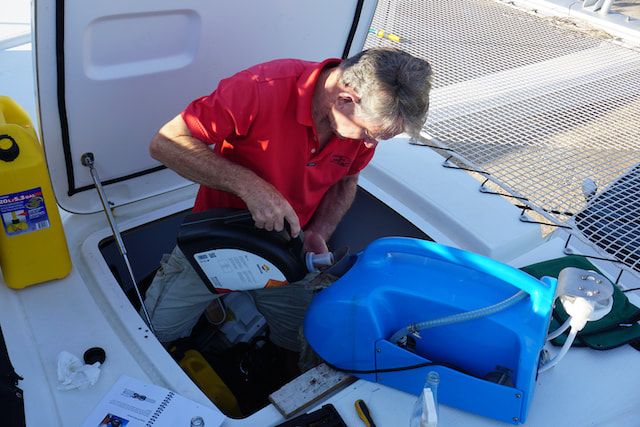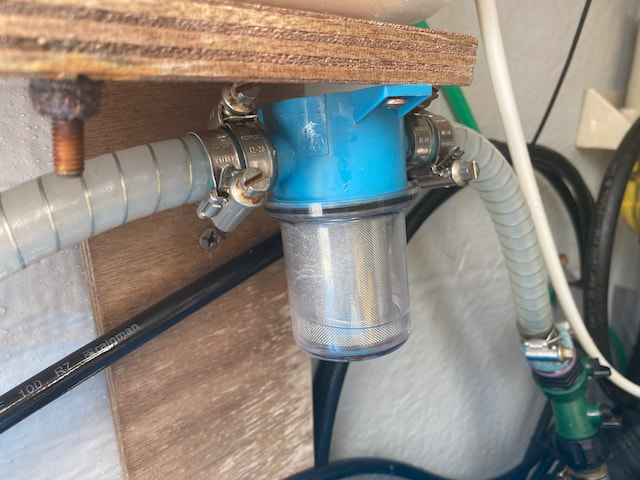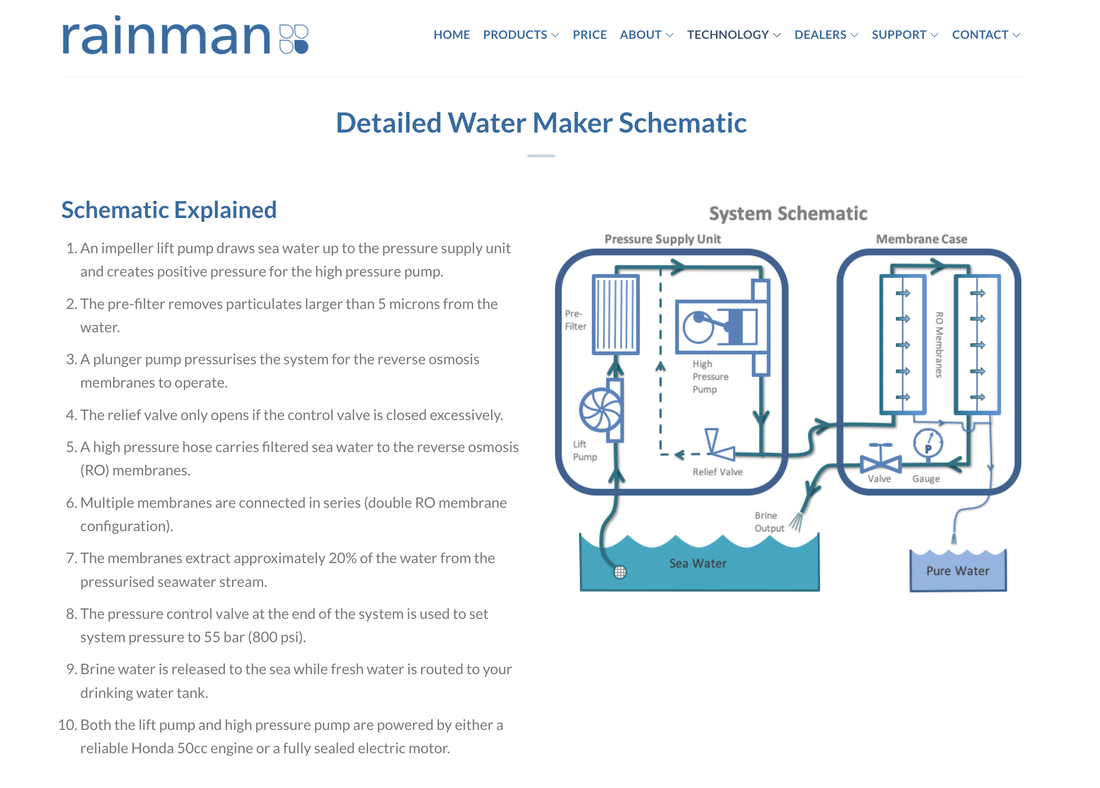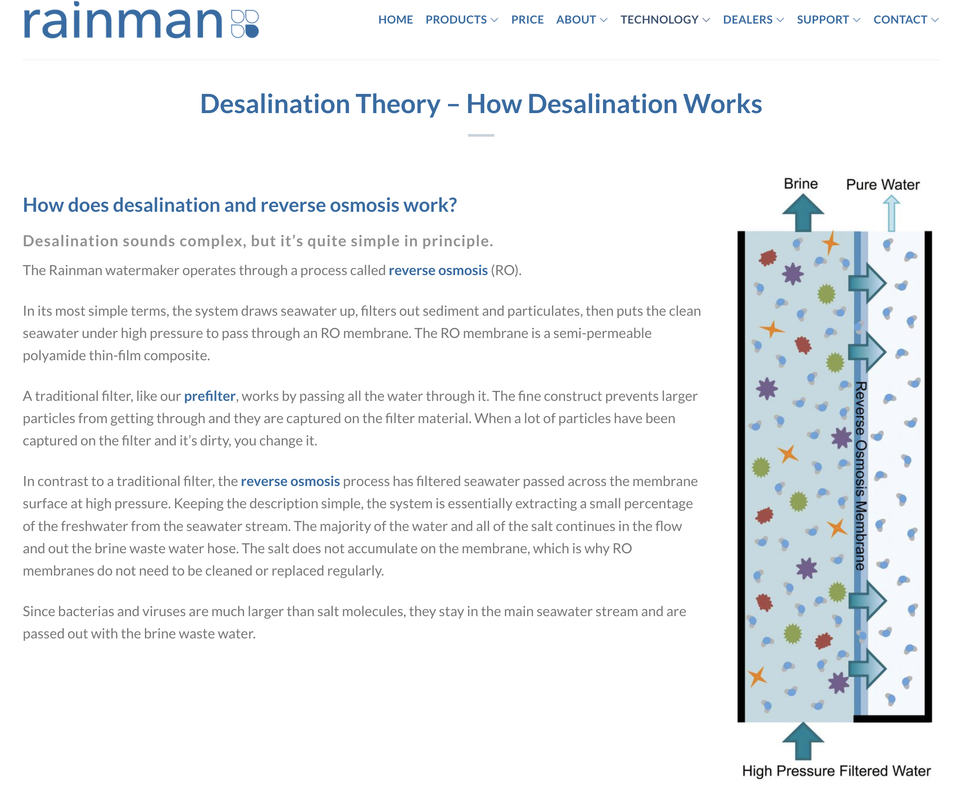We have installed the Rainman 230V watermaker which in ideal conditions gives us 120L of water per hour. This is a portable unit, however we have installed it in our starboard foredeck locker, along with the Genset. Initially we could only run this on the high load or mains circuit (powered directly by the generator) but since upgrading to a 3000W Inverter and Lithium batteries, we can now run it on without the generator. Uchimata installed the through hull fittings for the intake and the brine hose outlet. There is a 230V power outlet in the foredeck locker to plug it into.
There is a simple strainer on the intake line, followed by a 5 micron pleated paper particle filter before the seawater goes into the membranes. We never make water in an anchorage or marina, preferring to head outside the tideline into deeper water, away from potential contamination from towns, industrial or agricultural run off and other boats holding tanks. We have a 3 way valve to divert the flow from the watermaker to the testing line and to the tank.
Ours is an older model and doesn't have autoflush function and doesn't backflush from our water storage tank. Also it does have to be operated from inside the foredeck locker (not from inside the boat), meaning we need to be careful in rough conditions. We have installed a vinyl curtain to cover the controls and pump unit in case of rogue waves when making water underway.
Newer models do have the option of an interior control panel and autoflush from the storage tank. Even though we only ever put water from our watermaker in the tank, we never backflush from the tank, preferring to use freshly minted water from the watermaker which is placed in a 20L gerry can. We fill this gerry can first before diverting water to the tank, just in case we have to shut off water maker in a hurry (eg rough weather). We can backflush once we get into our protected anchorage.
Servicing is easy and consists of an annual oil change, regular cleaning of the strainer and changing of the pre-filter. After a lengthy lay up during Covid, we also needed to change the impeller on the lift pump. Parts are readily available, mainly they are Jabsco. We did develop a crack in the housing of the strainer, which led to a loss of pressure in the unit. Fortunately this could easily be replaced with a Jabsco part from the local chandlery.
Rainman have some great information available on their website, explaining how desalination works and how to get the best from your watermaker. The comprehensive manual is also available for download.
To read more about our water management system and risk management process click here.
There is a simple strainer on the intake line, followed by a 5 micron pleated paper particle filter before the seawater goes into the membranes. We never make water in an anchorage or marina, preferring to head outside the tideline into deeper water, away from potential contamination from towns, industrial or agricultural run off and other boats holding tanks. We have a 3 way valve to divert the flow from the watermaker to the testing line and to the tank.
Ours is an older model and doesn't have autoflush function and doesn't backflush from our water storage tank. Also it does have to be operated from inside the foredeck locker (not from inside the boat), meaning we need to be careful in rough conditions. We have installed a vinyl curtain to cover the controls and pump unit in case of rogue waves when making water underway.
Newer models do have the option of an interior control panel and autoflush from the storage tank. Even though we only ever put water from our watermaker in the tank, we never backflush from the tank, preferring to use freshly minted water from the watermaker which is placed in a 20L gerry can. We fill this gerry can first before diverting water to the tank, just in case we have to shut off water maker in a hurry (eg rough weather). We can backflush once we get into our protected anchorage.
Servicing is easy and consists of an annual oil change, regular cleaning of the strainer and changing of the pre-filter. After a lengthy lay up during Covid, we also needed to change the impeller on the lift pump. Parts are readily available, mainly they are Jabsco. We did develop a crack in the housing of the strainer, which led to a loss of pressure in the unit. Fortunately this could easily be replaced with a Jabsco part from the local chandlery.
Rainman have some great information available on their website, explaining how desalination works and how to get the best from your watermaker. The comprehensive manual is also available for download.
To read more about our water management system and risk management process click here.
